Aviation machinists are trades-people who work in a team or individually to fabricate, repair, rework or modify aircraft parts, components and specialized tooling. They accomplish their work by using complex machinery to maintain the preciseness of the work. They have in-depth knowledge of material working behavior. They must also be familiar with exotic and specialized materials used in the aviation industry. Aviation machinists will work many different materials and many different processes common to the aviation field. They will work extensively with aluminum alloys, titanium, stainless and specialty steels. They will also work with other exotic and composition materials not normally found in the general machining fields.
Aviation machinists must be able to read engineering drawings, and be intuitive to the thought process of developing and carrying out the steps required to machine parts or components. They should be able to think on their feet and be able to use the tools at hand. Many times, machinists are called on in the design phase of a project because of their knowledge of materials, processes and fabrication techniques.
Certification Requirements
To qualify for certification with CCAA, the applicant must possess the necessary knowledge and skills and have acquired a minimum of sixty (60) months in the occupation, or in the tool-making trade (including apprenticeship or other formal training) and practical knowledge of all mandatory tasks in Blocks A, B, C, D, E, F, G and Task 19 in Block I. The tasks in the logbook were made as generic as possible to accommodate the largest amount of work environments and equipment/tools but do not necessarily cover all tasks performed by individuals.
CCAA will apply credit for completion of a CCAA accredited Aviation Machinist course as part of the minimum sixty (60) months, on a month to month basis.
Tasks Common to Most Aviation Machinists
(note that sub-tasks for each task are not shown below)
Block A — Safety
Task 1 – Demonstrates Safe Working Practices and Techniques
Block B — Basic Knowledge
Task 2 – Interprets Aircraft and Related Manufacturers’ Manuals, Engineering Drawings and Other Documentation as Required by an Approved Maintenance Organization
Task 3 – Takes Measurements of Parts, Including Dimensions, Angles, Radii and Threads
Task 4 – Performs Layout of Paints and Centres, Straight, Parallel and Intersecting Lines, Angles, Polygons, Circles and Regular or Irregular Contours
Task 5 – Selects, Uses and Maintains Hand and Power Tools for Shop and Aircraft Applications
Task 6 – Identifies and Selects Materials for Aviation Related Applications
Task 7 – Demonstrates Knowledge of Heat Treatment, Testing and Processing of Metals
Task 8 – Selects Cutting Fluids, Compounds, Coolants and Lubricants
Task 9 – Develops Sequence of Operations for Work in Shops and Hangars
Task 10 – Selects Cutting Tools for Specific Aviation Related Machining Operations
Block C — Bench Work
Task 11 – Performs Bench and Fitting Operations
Task 12 – Disassembles and Re-assembles Mechanical Components
Block D — Sawing
Task 13 – Sets Up and Operates Power Sawing Equipment
Block E — Drilling Machine Operations
Task 14 – Sets Up and Operates Drill Presses and Drilling Machines
Block F — Lathe Operation
Task 15 – Sets Up and Operates Lathes and Vertical Turning Lathes
Block G — Milling
Task 16 – Sets Up and Operates Vertical Milling and Vertical Ram Milling Machines
Task 17 – Sets Up and Operates Horizontal and Universal Milling Machines
Block H — Jig Boring and Horizontal Boring
Task 18 – Sets Up and Operates Jig Boring and Horizontal Boring Mills
Block I — Grinding
Task 19 – Sets Up and Operates Surface Grinders
Task 20 – Sets Up and Operates Universal Cylindrical Grinders
Block J — Electrical Discharge Machines
Task 21 – Sets Up and Operates Electrical Discharge Machines
Block K — Computerized Numerical Control Machining
Task 22 – Sets Up and Operates Computerized Numerical Control Machines
Task 23 – Prepares Manual Parts Program
